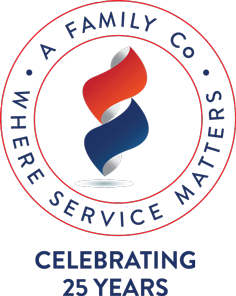Railings can add decoration to your property, help to separate it from the street and even provide some additional security. We design and produce bespoke railings in lengths beginning at 5 metres in both cast iron and wrought iron. In addition, we also offer a range of individual railing components within our cast iron store. These are ideal if you’re just looking to replace parts of an existing railing or simply want to create the railing yourself.
To help get you started, we’ve pull together a quick summary of the different parts of a railing:
Newel Post
These are supporting posts which are positioned at regular intervals along the length of the railing. They’re typically between 70 and 100 mm in diameter and are available in a variety of designs, from simple rectangular or cylindrical shapes to much more decorative patterns. If you’re renovating a period property then you may want to check out our blog on the difference between Georgian, Victorian and Edwardian metalwork to help you to find the most suitable design.
 |  |  |  |
Spindles/ Balusters
Spindles (also called balusters) are slimmer pillars which run between the newel posts and form the main body of the railing. Depending on the application, the gap between pillars may be limited by Building Regulations. For example, balcony railings can have no gaps greater than 100 mm in any dimension.
 |  |  |  |
In addition to a typical spindle, we also offer a wide range of ornamental panels. These are much wider than a conventional baluster and can include decorative features which add a real sense of character to a property. We also offer bowed balusters which project out adding a whole new dimension to the design.
 |  |  |  |
Top and Bottom Rail
The top and bottom rail sit above and below the spindles and are fastened at either end to the supporting newel post. Sometimes a bottom rail is not required as the spindles can be individually set into the ground level stone or concrete plinth.
Railing Head/ Finial
These are the crowning glory of a railing run. Railing heads are installed on the end of spindles (some larger options such as urns are also available for installation on the end of newel posts). In our cast iron store, you can see how design tastes changed and expanded over time. 18th Century Georgian designs are mostly spears or spikes – providing additional security.
 |  |  |  |
By the Victorian times this had developed with spears turning into softer, more decorative fleur de lis. Edwardian railing heads show influences from the art nouveau and arts and crafts styles with a greater emphasis on natural elements and flowing curves.
 |  |  |  |
Railing Panel
Railing panels offer a holistic alternative to the standard multi-component railing design. As their name suggests, they are fitted as complete panels which incorporate both top and bottom railing and detailed internal metalwork in place of balusters. Railing panels can run to a metre or more in length and offer a popular solution for wall-top applications.
 |  |  |  |
Back Stay
Back stays offer an additional support option for long-runs of railings. They’re particularly popular for use in combination with railing panels and, as with all our other pieces, are available with a number of design options.
 |  |  |  |
If you need any support or guidance with your railing, get in touch. We’re happy to help and offer advice on meeting planning requirements – particularly for trickier period properties.





